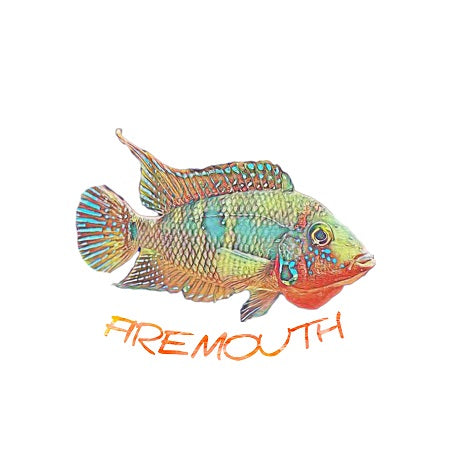Parosphromenus Linkei | freshwater fish
Parosphromenus Linkei | freshwater fish
Couldn't load pickup availability
General shipping information
General shipping information
SHIPPING :
Orders are generally shipped within 24/48 business hours with a shipping agency.
*Orders DO NOT go out on Fridays to avoid them being stuck all weekend at the transport agency.
You can check the status of your order by sending us an email to firemouthaquaristic@gmail.com
Shipping price:
SPAIN PENINSULA:
- NACEX 24/48H - €5.95 | FREE ON ORDERS + €60
- NACEX SHIPPING LIVE ANIMAL 24H €15 | FREE ON ORDERS +150€
- NACEX HEAVY DELIVERY - €9 | €15 depending on product
- PICKUP FROM WAREHOUSE (ONLY FOR ALICANTE) - €0
ISLANDS, CEUTA AND MELILLA
We use the Correos parcel service with a flat rate of €22
However, write to us and tell us what you are interested in because if it is a smaller package, the costs will be much cheaper.
You only pay the exact Post Office rate
Write to us if you have questions
EUROPE / EUROPE
We use the Correos parcel service with a flat rate of €45
However, write to us and tell us what you are interested in because if it is a smaller package, the costs will be much cheaper.
We use the parcel service of Correos with a flat rate of € 45
However, write us and tell us what you are interested in because if it is a smaller package, the costs are much cheaper.
Fish Shipping Information ONLY
Fish Shipping Information ONLY
**Only valid for Spain PENINSULA
Shipping fish costs €15 (or free from €150.00) and is sent via urgent NACEX , delivering the package before 7pm.
You can also choose to pick it up at the agency first thing in the morning on
day delivery is scheduled, in this case, please write to us once the order has been placed at 664373985.
Once the package arrives you will have one hour to acclimatize and resolve any incidents.
of the animal, if it is not done in this way the right to claim the animals will be lost.
If you want to find a greater variety of fish, you can request to join the WhatsApp offers group where we will share a super large list of fish in which you will find a great variety of fish for very attractive prices.
INFORMATION:
Classification:
Order: Perciformes
Osphronemidae
Distribution:
2 kilometers north of Sukamara and Tarantang, Central Kalimantan, Borneo, which refers to Pudu Village in Sukumara District, West Kotawaringin Regency, Central Kalimantan Province, Indonesia (Borneo).It has also been collected slightly further east, near the larger town of Pangkalan Bun, although the full extent of its range remains unclear.
A reddish form is marketed as P. sp. 'Seruyan' and the latter appears to relate to Seruyan Regency considerably further east.
Some of these populations exhibit phenotypic differences and may represent different genetic lineages, so they should be kept separate in aquariums.
A stenotypic inhabitant of peat swamp forests and associated blackwater streams, in some of which it occurs sympatrically with the congener P. opalios.
In undisturbed habitats, the dense canopy of branches above means that very little light penetrates the surface of such environments, and riparian vegetation also tends to grow densely.
The water is typically stained dark with humic acids and other chemicals released by decomposing organic materials, the dissolved mineral content is generally negligible, and the pH as low as 3.0 or 4.0.
Its form is:
Adult males tend to grow larger than females and develop more extended pelvic, dorsal, anal and caudal fins.
Both sexes are also capable of changing color quickly depending on mood and become significantly more intense when aggressive, for example.
Its size is:
30 – 35mm.
Parameters required:
PH: between 3.0 and 6.5
Temperature can range between 22-28°C
Aquarium size:
An aquarium with base dimensions of 40 * 20 cm or equivalent is sufficient for a couple.
Feeding:
This species is mainly a micropredator that feeds on small aquatic invertebrates, so in the aquarium it should be offered a variety of small live foods such as Artemia nauplii, Daphnia, Moina, mosquito larvae, microworms, etc.
Frozen foods are sometimes accepted but not considered nutritious enough, while most dry products are usually rejected.
Behavior:
It is not recommended for the general community aquarium for the reasons already mentioned.
Its care requirements, disposition and especially conservation status dictate that it should be kept alone or together with a group of small, peaceful cyprinids such as Boraras or Sundadanio spp.
Likewise, different Parosphromenus spp. They should not be kept together as many females are very difficult to differentiate and some are undoubtedly capable of hybridizing.
If you wish, you can keep a mixed group, although most breeders prefer to keep it in sexual pairs, as some fry can survive alongside their parents, but usually not if other adults are present.
Share it with whoever may be interested


